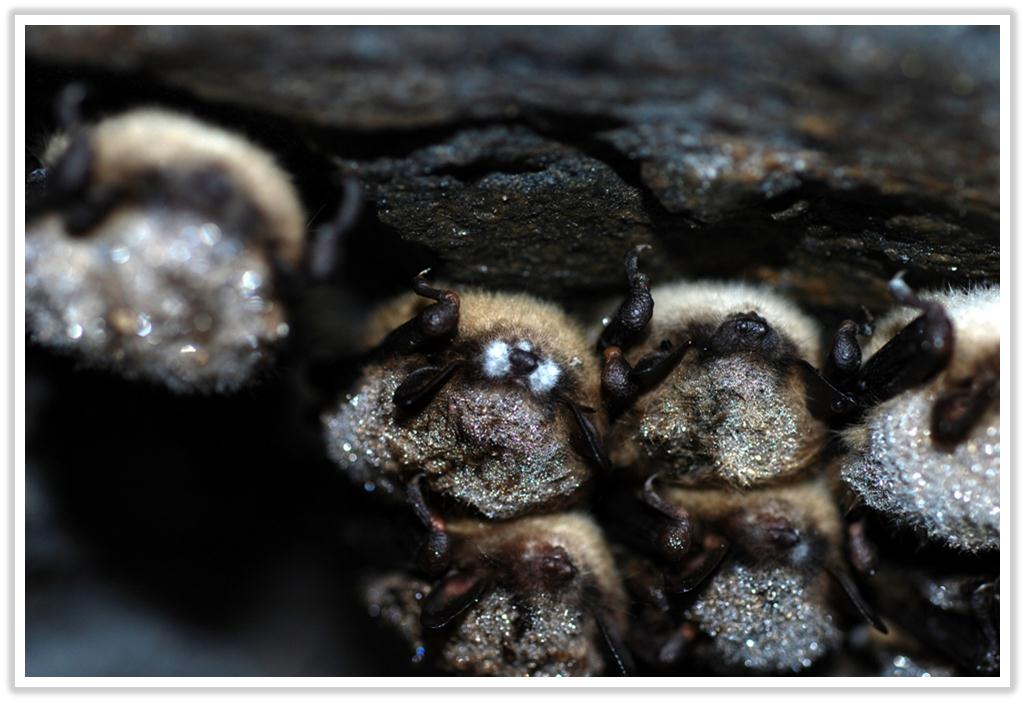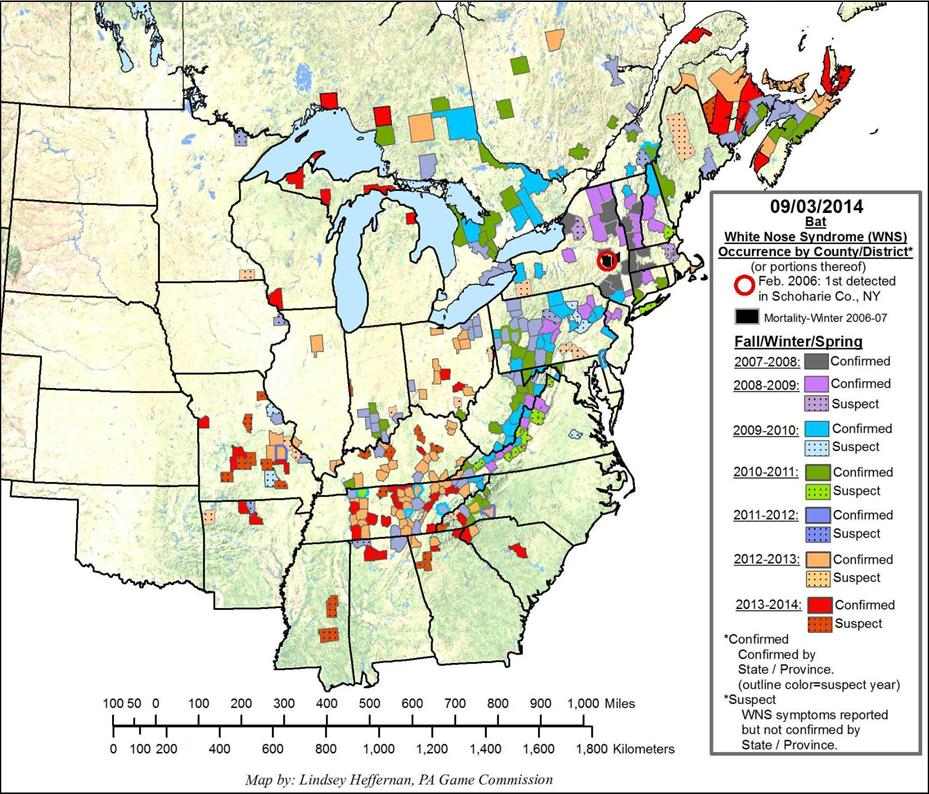Bats are an integral part of Ontario’s biodiversity and serve important ecosystem functions such as controlling populations of non-beneficial insects that damage crops and spread diseases. White-nose syndrome, a disease that affects hibernating bats, is named for a white fungus (Pseudogymnoascus destructans) appearing on the muzzle, wings and ears (Figure 1).
Bats that are infected with the fungus have been known to fly outside in the day and cluster at the entrances of their hibernacula during the cold winter months. As a result, bats have been dying in unprecedented numbers; bat populations in hibernacula known to have been exposed to the fungus for a minimum of two years have declined by as much as 99 percent. The disease is spread amongst hibernating bats, but may also be spread by people visiting caves where bats hibernate.

Figure 1. Little Brown Bat with the characteristic ‘white nose’ in centre of photo (credit: Lesley Hale, MNRF).
Figure 1. Little Brown Bat with the characteristic ‘white nose’ in centre of photo (credit: Lesley Hale, MNRF).
The disease was first reported in New York State in 2006 and has since been determined to be the leading cause of bat population decline in North America. Occurrences of white-nose syndrome have been confirmed in Ontario by the Canadian Wildlife Health Cooperative since 2010. Monitoring of bat hibernacula demonstrated rapid spread of the disease north-westward across Ontario (Figure 2) and in 2014, the first occurrence was confirmed in northwestern Ontario. Three of Ontario’s eight bat species , the Little Brown Bat (Myotis lucifugus), the Eastern Small-footed Bat (Myotis leibii) and the Northern Long-eared Bat (Myotis septentrionalis) have been listed as endangered under Ontario’s Endangered Species Act as a result of declines caused by and the threat posed by White-nose syndrome. Continued monitoring and research efforts by the government of Ontario and partners across North America have been crucial in determining the cause of the disease, the level of impact and documenting its spread. However, this is an emerging disease and there is still more to be understood about the fungus, including the exact mechanism of its spread between bat populations and ways to prevent and/or manage the rapid decline in bat populations.

Figure 2. White-nose syndrome occurrence confirmations in eastern North America (Source: Canadian Wildlife Health Cooperative).
Figure 2. White-nose syndrome occurrence confirmations in eastern North America (Source: Canadian Wildlife Health Cooperative 2014).
References:
Canadian Wildlife Health Cooperative. 2014. White-nose syndrome-Ontario. [available at: http://www.cwhc-rcsf.ca/data_products_wns.php]
US Fish and Wildlife Service. 2014. White-Nose Syndrome.org: A coordinated response to the devastating bat disease. [available at: https://www.whitenosesyndrome.org/about-white-nose-syndrome]
